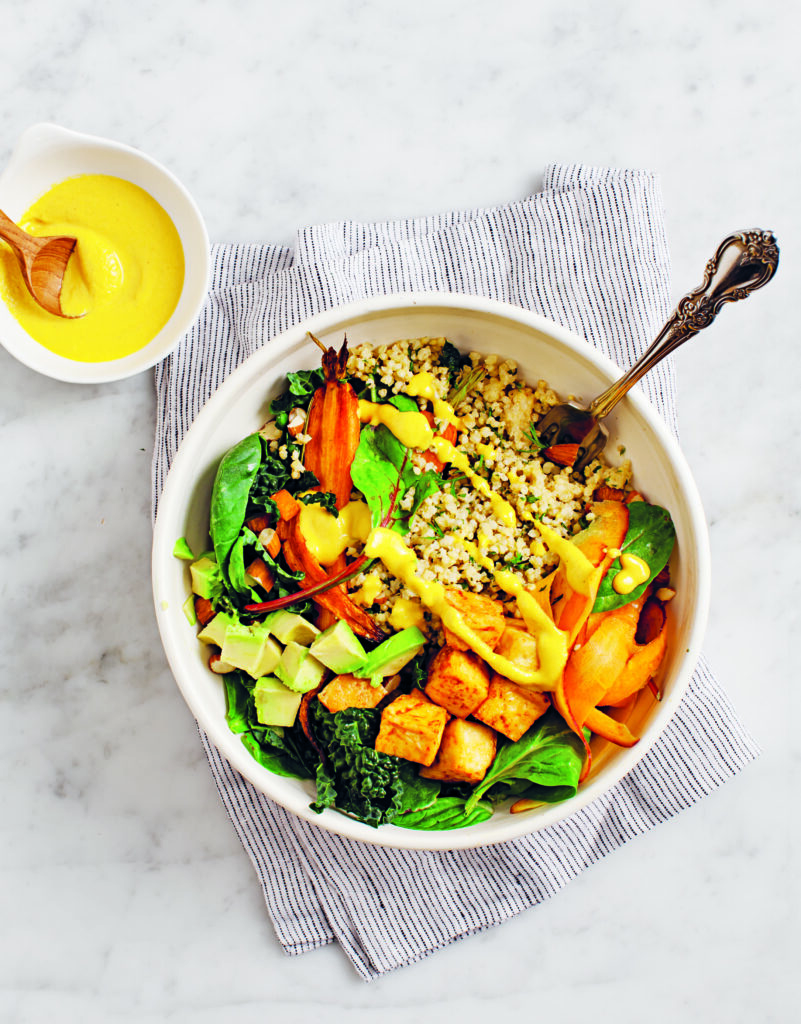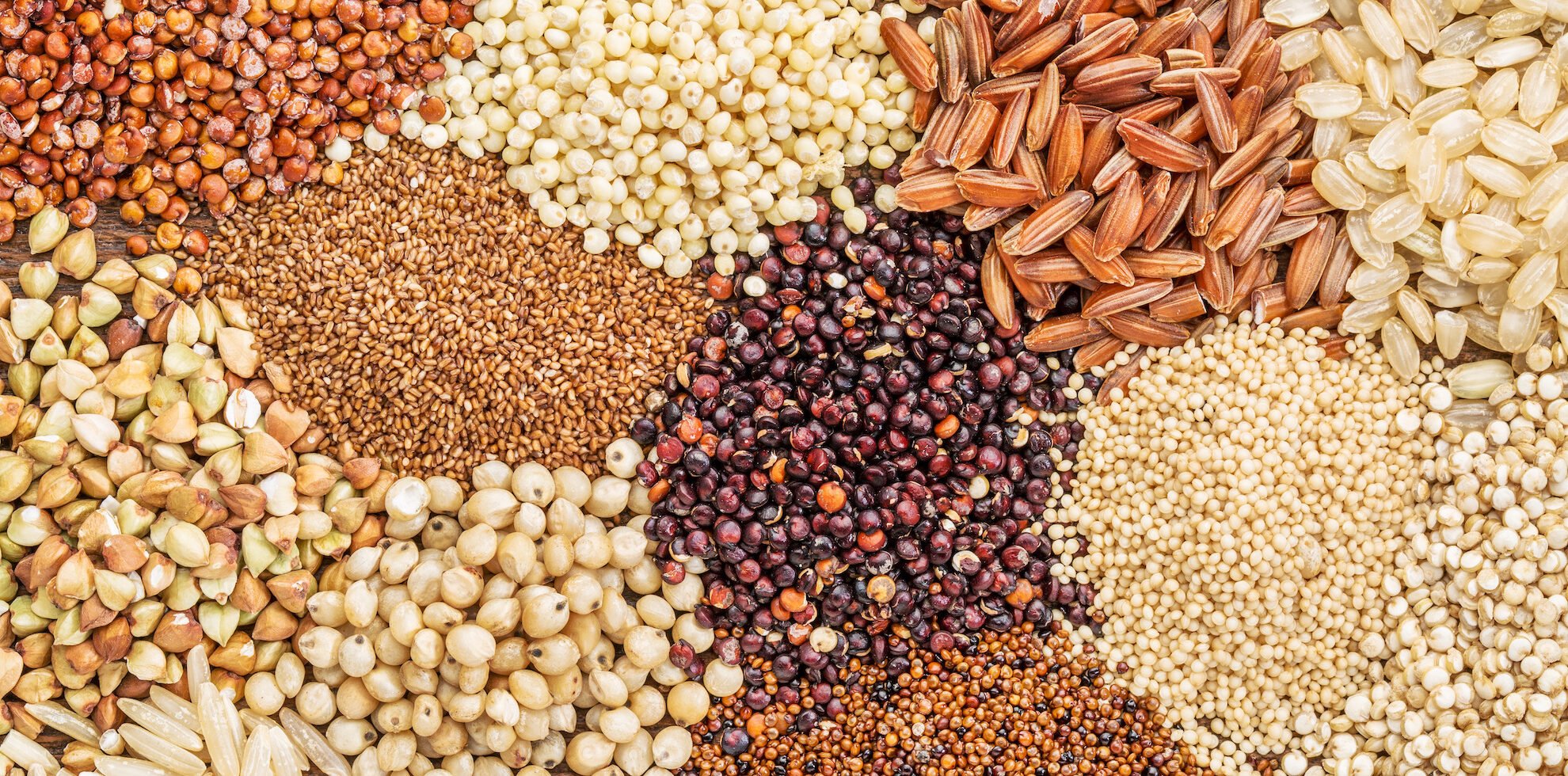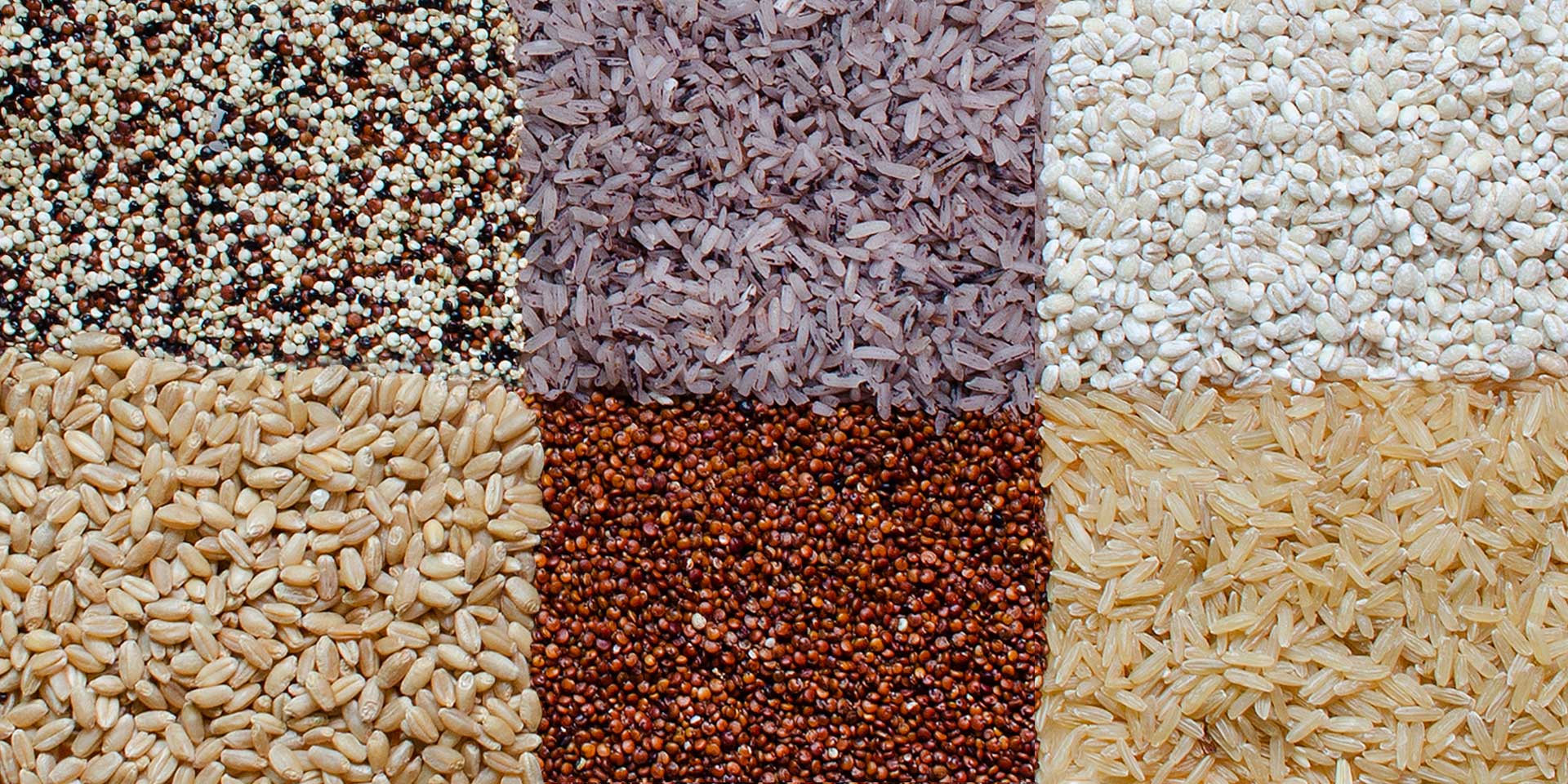Why 2023 is the International Year of Millets
In case you missed it, we’re three-quarters of the way into the International Year of Millets. It’s an official, internationally recognized designation — declared by the United Nations at its 75th General Assembly session back in 2021.
Millets, though among the first plants ever to be domesticated for agriculture, are regularly described as a “forgotten food” — and it’s possible you haven’t been properly introduced. A varied group of 20 or so cereal grasses that produce small, rounded grains, millets are grown and consumed mostly in the Global South, primarily Africa (which produces 55 percent of the global supply) and Asia (accounting for another 40 percent). Some of them are known as “millet” in English — like pearl millet and finger millet, the major varieties in much of the world — while others that the U.N. groups into the millet family, including teff and Job’s tears, have standalone names. They can be eaten as whole grains or used for breads, porridges and fritters, and are a staple crop for an estimated 90 million people.
That number, however, used to be higher, and production has declined as rice, corn and wheat continue to dominate. Even including the more widely cultivated sorghum, which is sometimes included in the millet family, the U.N. reports that millets make up less than 3 percent of the world grain trade. The message for the International Year of Millets: now’s the time to bring them back.
The proposal was spearheaded by India, where the government has worked to reintroduce the crop — an effort aided by sustainable agriculture organizations, including Vandana Shiva’s Navdanya and the MS Swaminathan Research Foundation, which have helped establish community resources like seed-saving cooperatives. With these successes as a lodestar, the U.N.’s Food and Agriculture Organization has been advocating for worldwide research and farmer support; partnering with chefs to spread public awareness; and organizing worldwide events, with millet-focused conferences from Hungary to Kenya to Kuwait to Nebraska. But why millets? And why now?
Small grains, big possibilities
The global food system isn’t working for everybody — in 2022, the FAO placed 45 countries on the spectrum between “severe localized food insecurity” and an “exceptional shortfall” in food supplies. The top-cited factors: high food prices, reduced incomes and widespread climate extremes that impact crops, with total grain production down 2 percent worldwide from the previous year. Some suggest a return to millets could provide relief.
“They are drought resistant and can grow in poor soil,” explains Pierre Thiam, a Senegal-born chef who has dedicated himself to promoting fonio — a type of millet grown around West Africa and the Sahel region. The beauty of millets is that they will thrive almost anywhere, being heat-loving warm-season crops that, depending on the variety, can tolerate floods and exhibit high resistance to insects and disease. Many varieties offer up to 30 times more calcium than rice and are good sources of iron and protein. Thiam also adds that fonio and its millet relatives grow quite quickly, sometimes ready for harvest in a span of two months, “which makes it an important crop in times when others fail to grow.”
One goal of the International Year of Millets is to explore these grains’ potential for feeding large populations amid a changing climate — decreasing their reliance on imports in the process. Beyond the basic right to food security and sovereignty, though, the campaign also highlights millets as a means of improving agricultural livelihoods and creating decent work through regional industries. With enough demand, millets could provide real economic opportunity for smallholder farmers: The cost of production is generally low, and the crops require few inputs, even helping improve soil health. But both public and private sectors will have to invest in sustainable markets, ensuring that supply chains continue to benefit grower communities (and that millets can avoid the boom-bust cycle other “trendy” grains have experienced).
Creating economic opportunity is a cornerstone of Thiam’s work with Yolélé, the company he founded in 2017, which sources directly from West African smallholder farmers, predominantly women. In addition to recent investments in Mali’s fonio industry, Yolélé recently opened a new processing and export facility in Senegal to aid with distribution around Africa, Europe and the U.S. “We have been consistently solicited by an increasing number of stakeholders or consumers to share Yolélé’s experience,” Thiam says — good news for others hoping to follow their lead.
Sowing diversity at home
The conversation around millets is hardly limited to major producing countries or places with food supply uncertainty. Advocates in the U.S. are hoping the groundswell of attention will help further a millet movement of our own.
Incorporating these cereals into their rotations can offer a range of benefits for farmers, and not just because they can survive the extremes that are throwing the future of other crops into question. “Millet can increase productivity of other crops in a rotation by helping to control weeds, relieve pest and disease pressure and preserve soil moisture,” explains Tayler Reinman, a crop science graduate student in Washington State University’s Sustainable Seed Systems Lab. Varieties like foxtail and Japanese millet are inspiring enthusiasm for use as cover crops, protecting fallow land from extreme heat, dryness or erosion. Millets can also be harvested using the same equipment as for wheat or corn and soybeans.
These crops are not entirely novel in the U.S., though the main consumers here are not getting them at the grocery store: The vast majority of domestically grown millet is used for birdseed or feed and forage for livestock. Proso millet, grown predominantly in the Great Plains, and pearl millet, mostly in the South, are the most significant varieties grown for human consumption. But even if they do show up in the grains aisle — by no means a guarantee — those who aren’t used to cooking them may not know quite what to do with them. “The applications are endless,” Reinman says, “but millets just haven’t yet been integrated into our cultural consciousness.”
Joni Kindwall-Moore, founder of the baking-mix brand Snacktivist Foods, remembers her first millet encounter: “Probably in a bulk bin, probably at my local health food store, probably in the 90s.” At the time, these grains were presented as an alternative to wheat, marketed more toward adherents of a gluten-free or macrobiotic diet. But Kindwall-Moore would rather think of millet as an addition, and a key player in the movement to revive a diverse, robust regional grains system. “We started our company because we wanted to elevate these overlooked, forgotten crops,” she says, “really pushing back on that extinction of food biodiversity that we’ve experienced in the last hundred years.” Still, in seeking out sustainable suppliers, Kindwall-Moore realized just how much work needs to be done.
Because their hulls are quite difficult to digest, millets must be processed to a fairly high standard — but the grains themselves, being very small and rather fragile, have specific processing needs. “Like any grain, there are several steps between the field and the final food product, including seed-cleaning and dehulling,” Reinman explains. But for millet, “this requires specialized equipment that can be difficult for small- to midsize processors to access, especially when they are experimenting with working with this grain for the first time.”
At the moment, Kindwall-Moore says it’s simply not possible to find regional millet dehulling facilities in most parts of the country, and even the larger Midwestern operations “are not willing to work with smaller outside players very much.” Combined with lack of research and industry support, the roadblocks for small-scale growers remain especially high.
Making millet marketable
In 2022, Kindwall-Moore, alongside food systems scholars Jonathon Landeck and Don Osborn, cofounded the North American Millets Alliance in the hopes of “rally[ing] the experts, the evangelizers, the cheerleaders and the curious.” In addition to improved infrastructure — the organization is currently working toward a grant that would fund a dehulling facility in Montana — she sees getting millets into the hands of chefs as key to public awareness and interest. “We’re really hoping that we can follow a trend like quinoa did,” she says. “Quinoa was introduced through chefs, at the food service level, and that is what drove the consumer discovery at the grocery store level.”
Reinman agrees that the keys to creating demand will be “education and exposure,” which she hopes will in turn help reduce the barriers farmers face in processing and distribution and encourage more people to start planting. As part of a project called New Grains Northwest, Reinman is studying the possibilities of proso millet as a viable crop for eastern Washington and the surrounding agricultural regions. “These commercially available varieties…have the potential to really complement the wheat-based cropping systems that dominate” this part of the country, she explains. In addition to its field trials, New Grains Northwest is initiating market research, outreach efforts and even the development of new products, like breakfast bars and pancake mixes.
Many hope the momentum of the International Year of Millets will ripple into people’s home-cooking habits. “Interest in millets is definitely growing,” says Thiam, who has helped spread the U.N.’s millets message as a chef ambassador. If you find your own interest piqued, it’s important to remember that millets are a broad category and that the grains sometimes look or behave differently, so always familiarize yourself with what you’re buying. For rookies, fonio can be a gateway (“it cooks in five minutes and is quite versatile”), and Thiam has already documented its many culinary possibilities in 2019’s “The Fonio Cookbook: An Ancient Grain Rediscovered” — potentially the first major cookbook release focused entirely on millet, but hopefully not the last.
When seeking out domestically grown products, you’ll find that an ingredient listed simply as “millet” is usually proso millet. Its grains are larger than fonio, but proso is also easy to work with and can be used in a variety of ways — try the grain bowl recipe, below, from Love & Lemons creator Jeanine Donofrio — and makes an easy substitute for rice. Organic options are available online, including through regional mills like Great River Organic Milling and Camas Country Mill; in the grocery store, Bob’s Red Mill offers both flour and whole grains. Millets are also showing up in gluten-free products, from beers — especially in Colorado, where most proso millet is produced — to bread products, like Snacktivist’s mixes or the whole loaves from Simple Kneads.
“There are more brands coming in, slowly,” says Kindwall-Moore. “But they’re coming, thank God, because we need more of us doing this.”

Recipe: Carrot-Ginger Grain Bowl
Jeanine Donofrio, “The Love & Lemons Cookbook”
Serves 4
Ingredients
10 small heirloom carrots
8 ounces (225 grams) extra-firm tofu, cut into cubes
Extra-virgin olive oil, for drizzling
½ teaspoon (2 milliliters) sriracha
2 cups (500 milliliters) mixed greens
2 cups (500 milliliters) cooked millet
⅓ cup (60 milliliters) chopped carrot greens
½ cup (75 milliliters) chopped almonds
1 recipe carrot-ginger sauce*
1 small avocado, diced
Sea salt and freshly ground black pepper
Method
- Preheat the oven to 400 F (200 C).
- Use a vegetable peeler to peel 3 carrots into ribbons. Save any leftover carrot pieces for roasting.
- Line two baking sheets with parchment paper. Cut the remaining 7 carrots vertically in quarters and arrange on the first baking sheet along with any leftover carrot pieces. Place the tofu cubes on the second baking sheet. Toss the carrots and tofu cubes with a drizzle of olive oil, and season with salt and pepper. Bake for 15 to 17 minutes, or until golden brown around the edges. The carrots should still have some bite to them.
- Remove the tofu from the oven, toss it lightly with sriracha, and return it to the oven for 2 more minutes.
- Toss the salad greens with the cooked millet, carrot greens, almonds, a third of the carrot-ginger sauce, and a few pinches of salt.
- Assemble the bowls with the millet salad, roasted carrots, carrot ribbons, tofu, avocado, and pepper. Serve with the remaining carrot-ginger sauce on the side.
* Recipe: Carrot-Ginger Sauce
Jeanine Donofrio, “The Love & Lemons Cookbook”
Ingredients
1 cup (250 milliliters) chopped raw carrots
1 garlic clove
¼ cup (60 milliliters) extra-virgin olive oil
2 tablespoons (30 milliliters) tahini
2 tablespoons (30 milliliters) fresh lemon juice
1 teaspoon (5 milliliters) minced ginger
2 tablespoons (30 milliliters) fresh lemon juice
Sea salt and freshly ground black pepper
Method
In a blender, puree the carrots with the garlic, olive oil, tahini, lemon juice, ginger, and orange juice. Season with salt and pepper.
Reprinted with permission from “The Love & Lemons Cookbook: An Apple-to-Zucchini Celebration of Impromptu Cooking” by Jeanine Donofrio. Avery, 2016.
Top photo by askaflight/Adobe Stock.
More Reading
4 Tips for Stretching Your Food Dollars
April 16, 2025
How to use extra onions
April 9, 2025
Our latest podcast episode on pistachios: The making of a food trend
April 1, 2025
This vegan tiramisu will bring you joy
March 11, 2025
For lessons in thrifty, climate-friendly cooking, look to vintage cookbooks
March 10, 2025
Americans love olive oil. Why doesn't the U.S. produce more of it?
February 28, 2025
How to fight household food waste? Join our Eat Down Your Pantry Challenge!
February 13, 2025
During a period of egg chaos, egg replacements for (almost) any situation
February 7, 2025
Ways to go meatless — or less-meat — in January
January 15, 2025
Why worker welfare is critical to truly “sustainable” wine production
January 10, 2025


